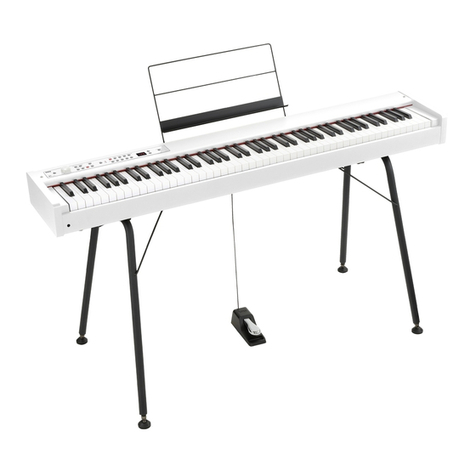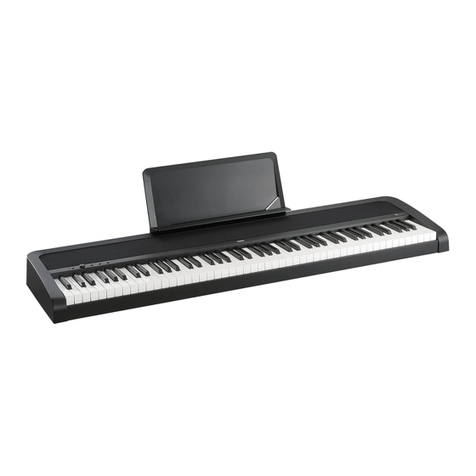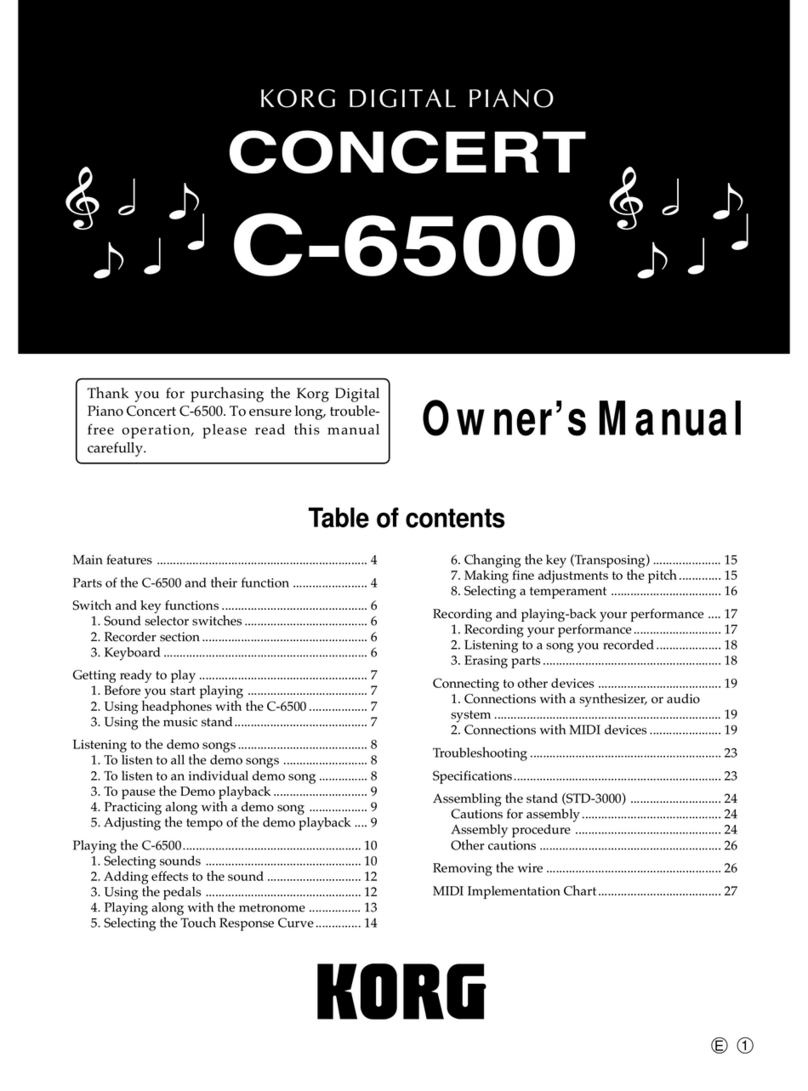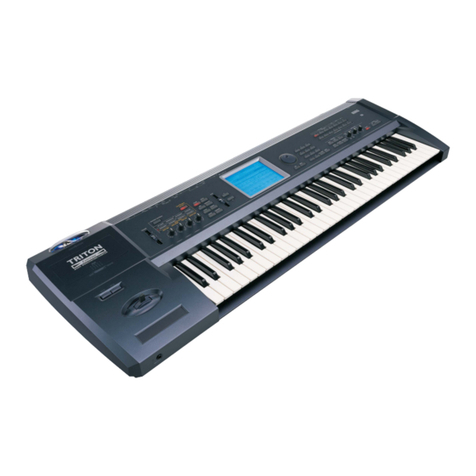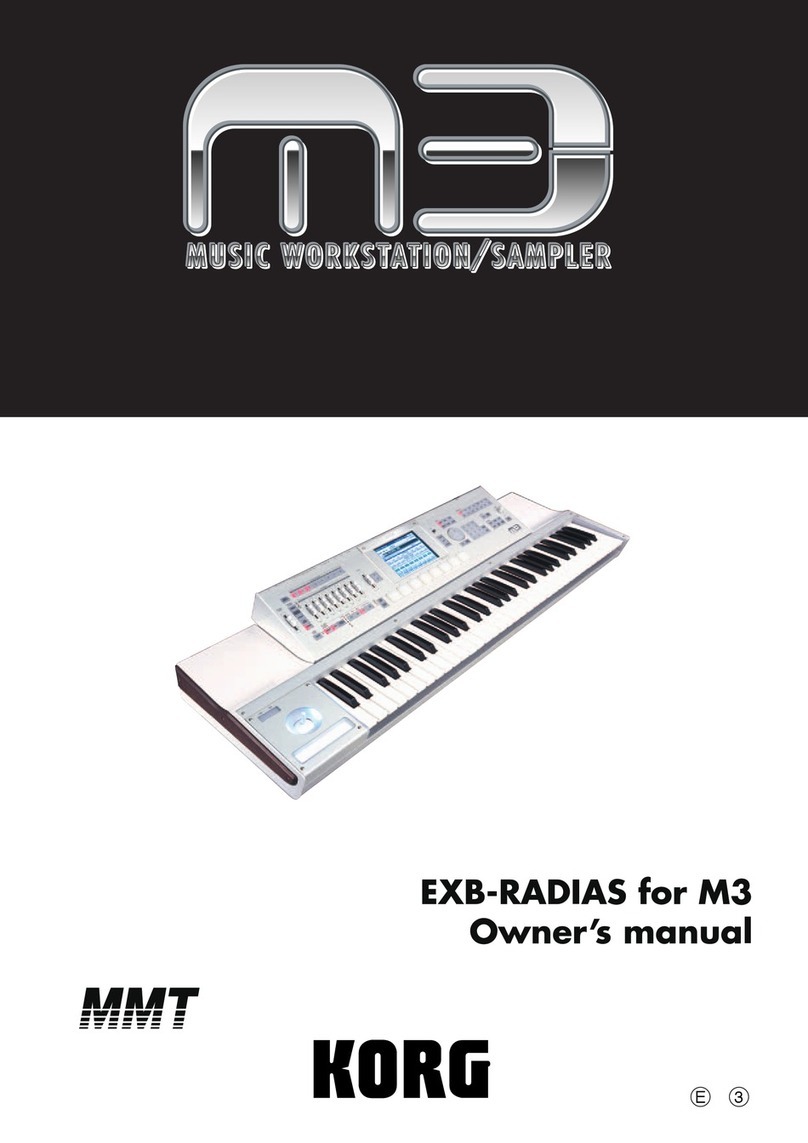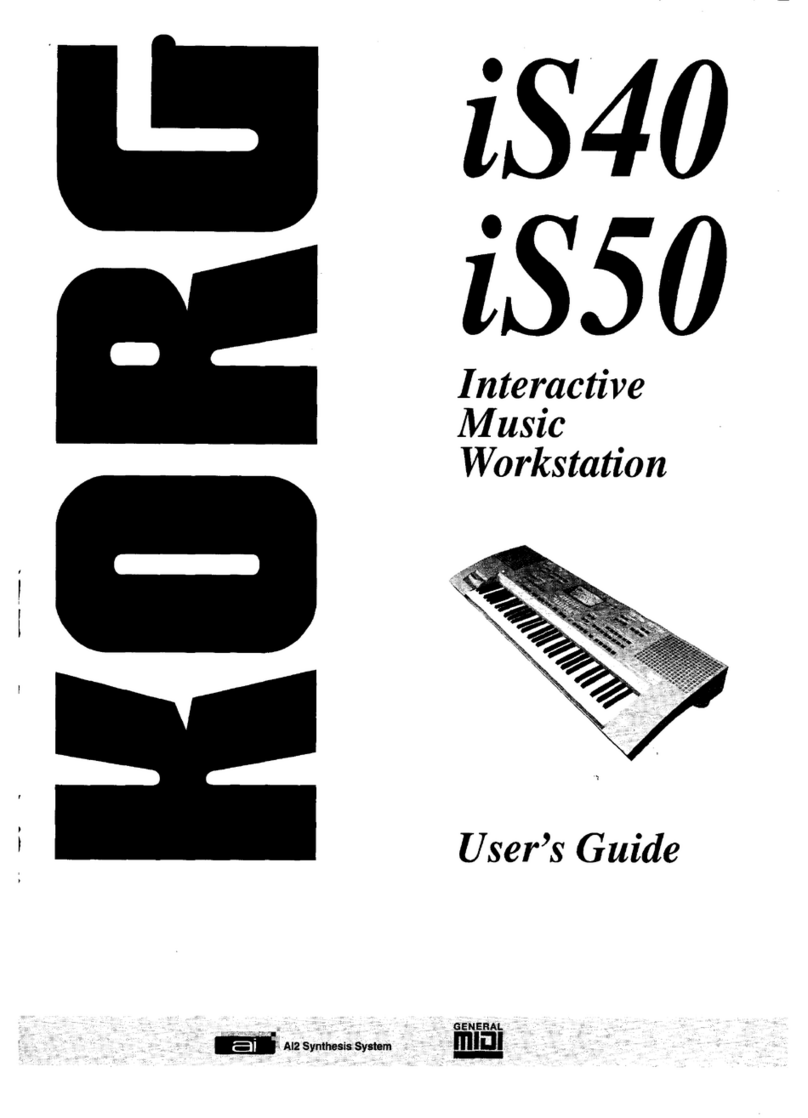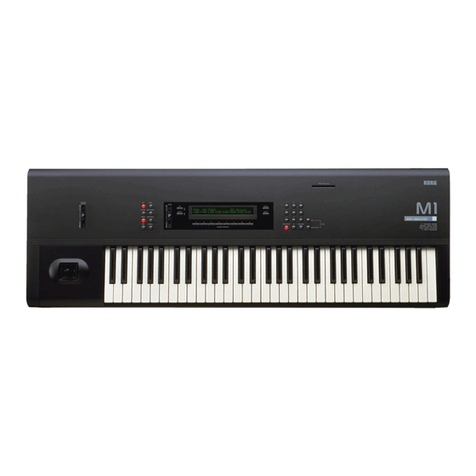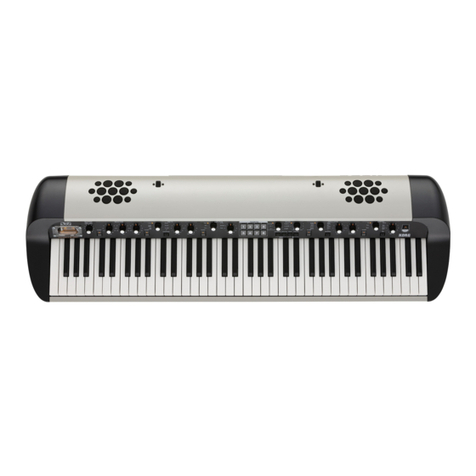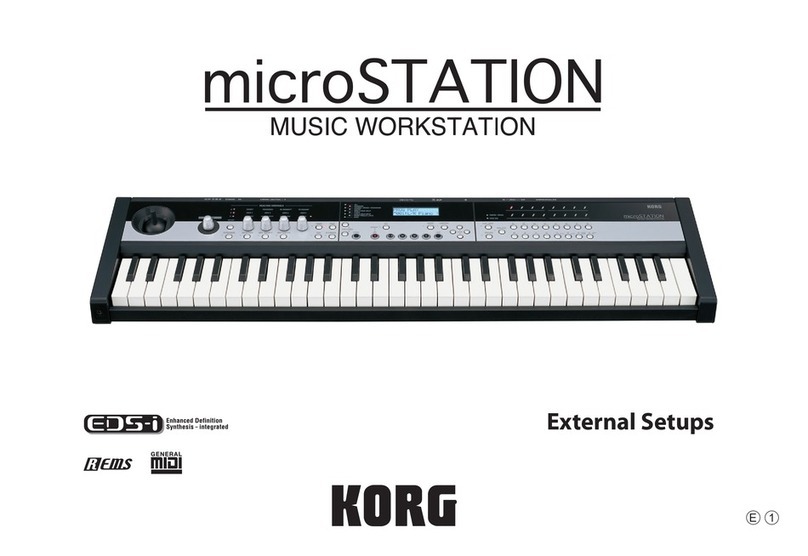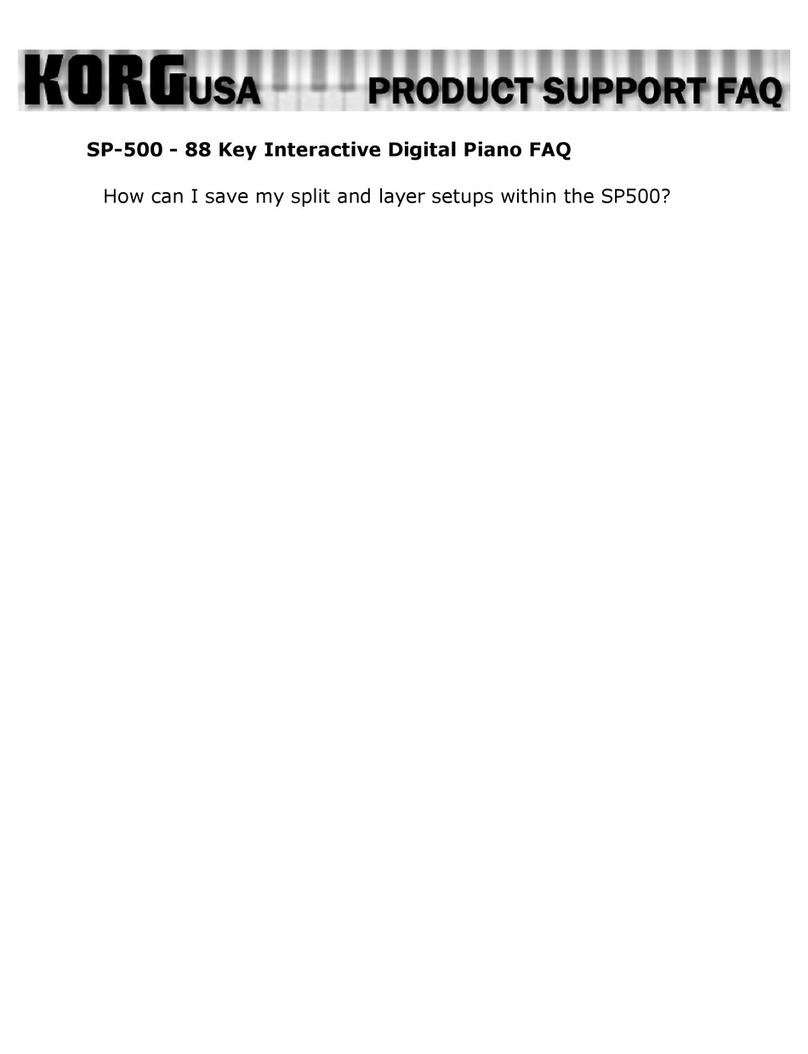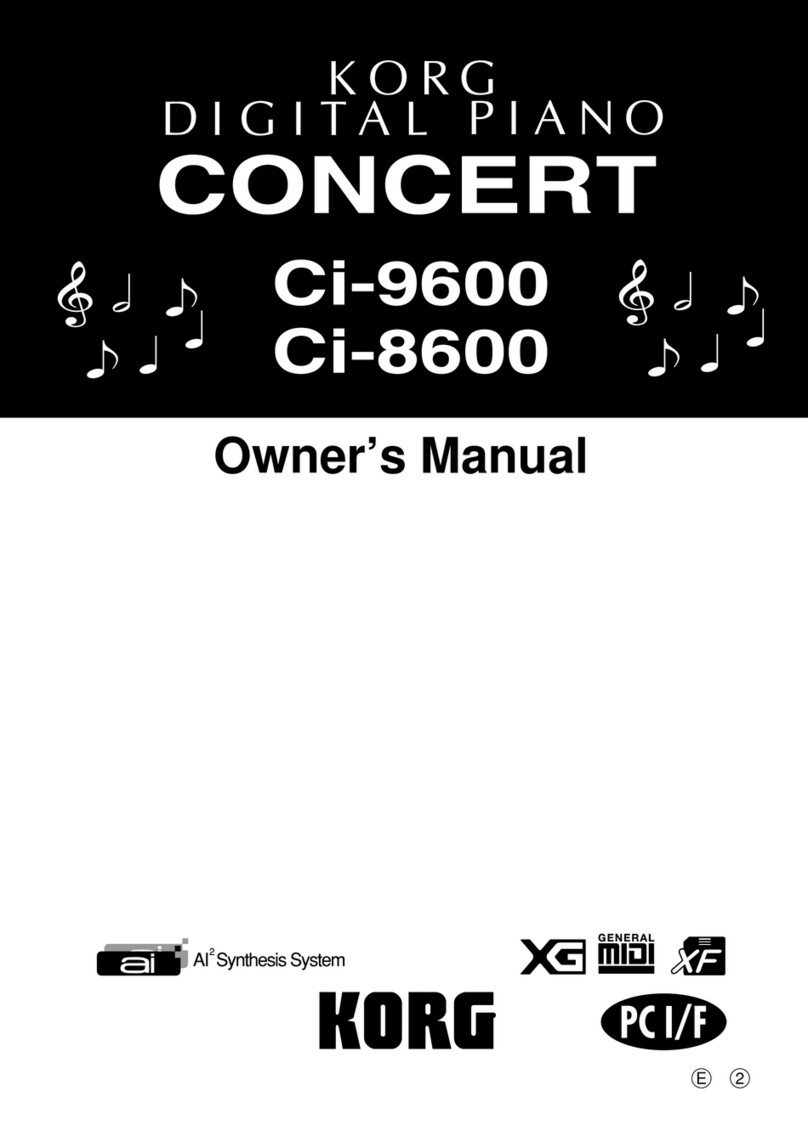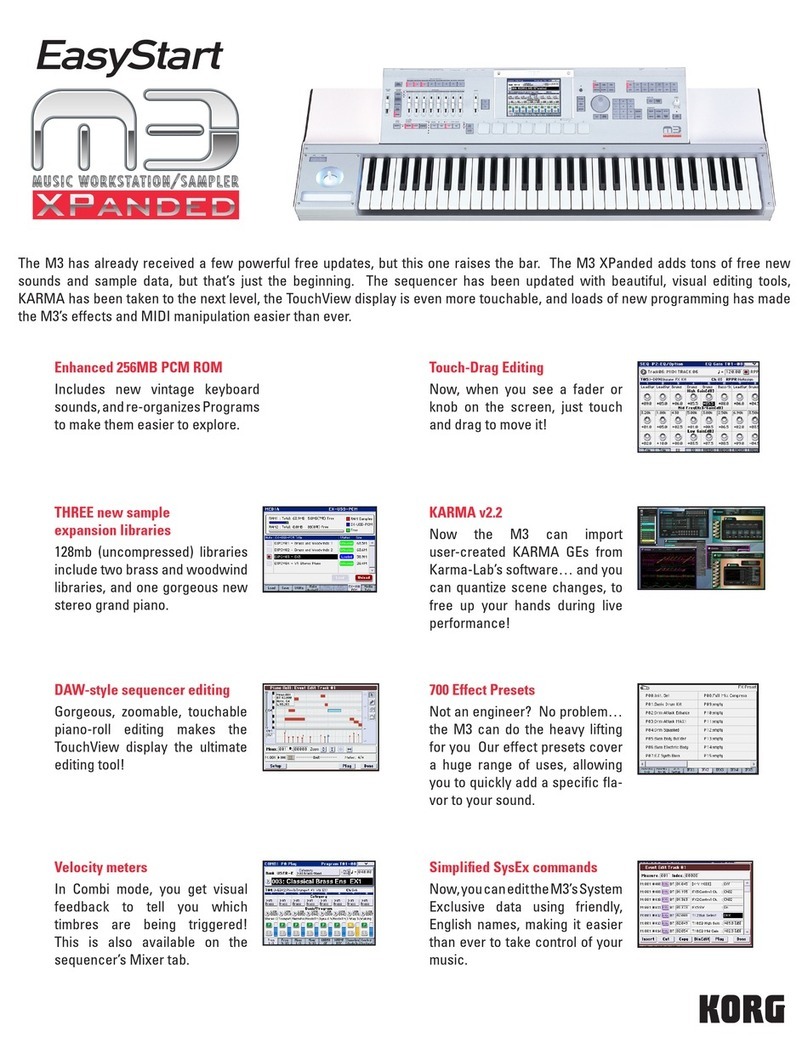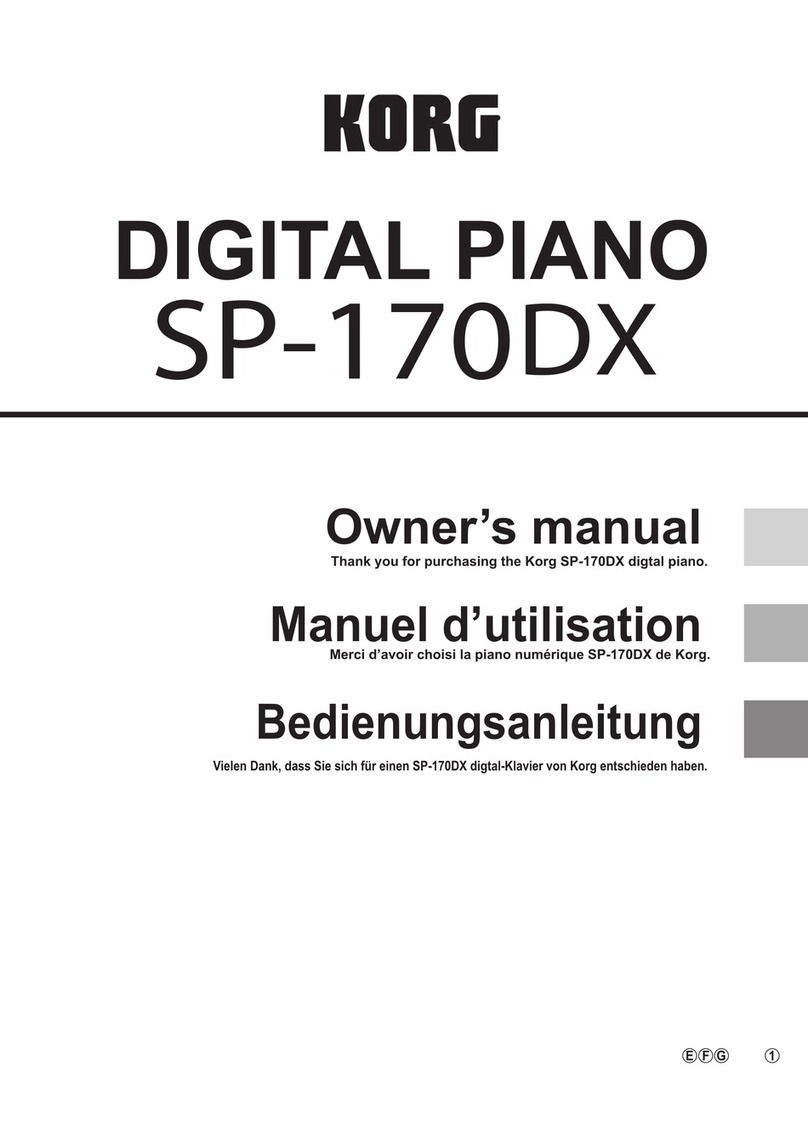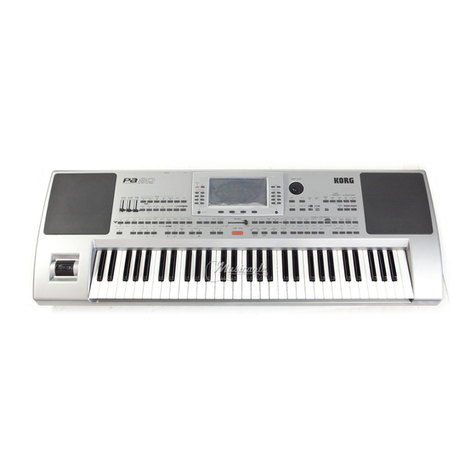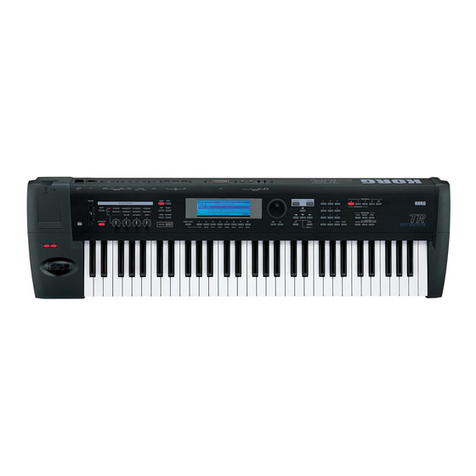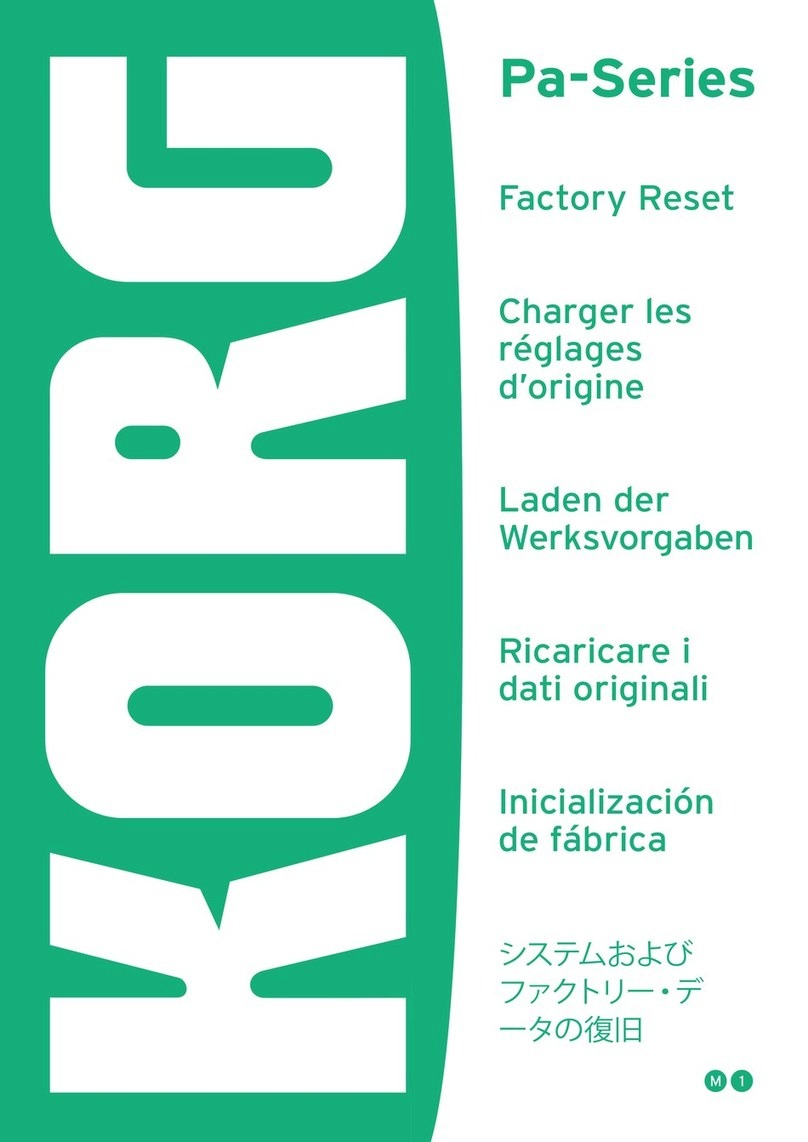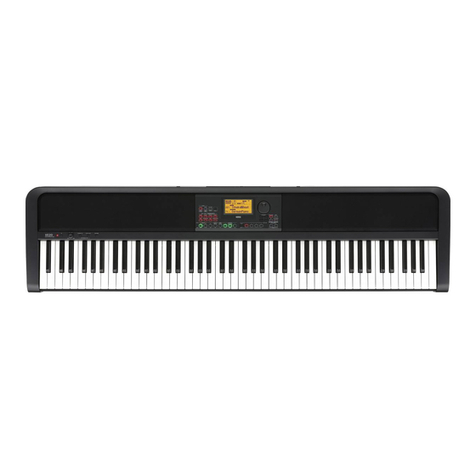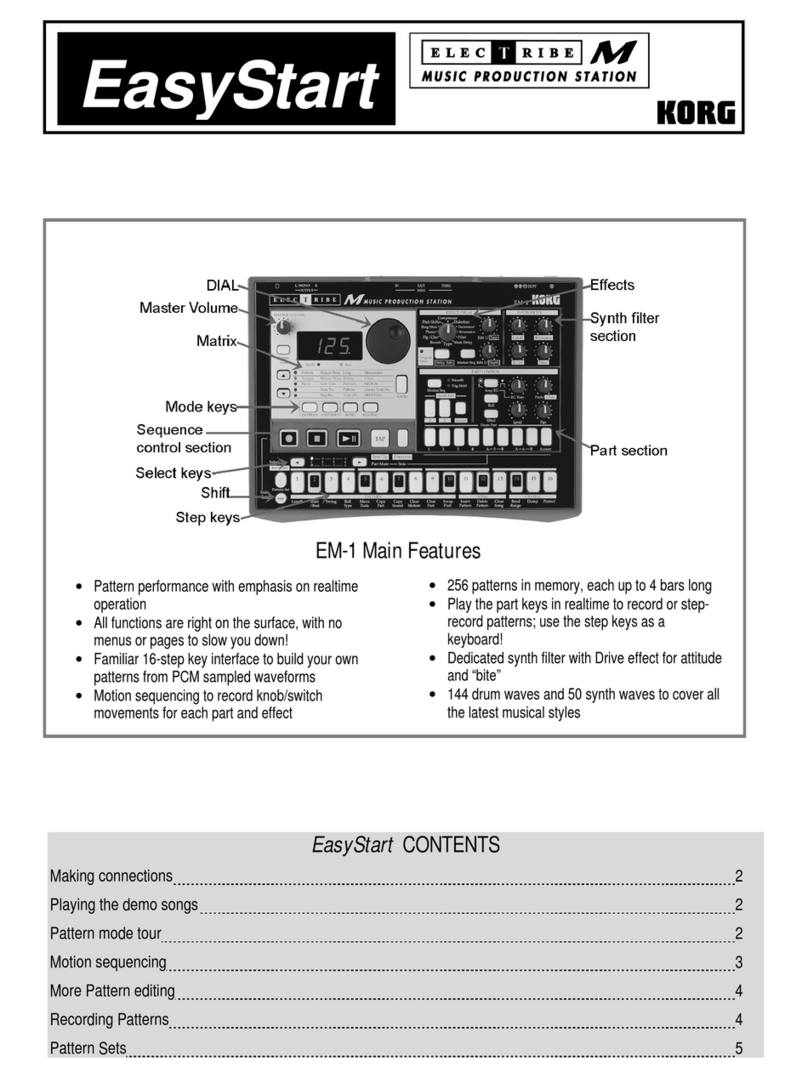
Table of Contents
v
Sequencer mode . . . . . . . . . . . . . 191
An overview of Sequencer mode . . . . . . . . . . . 191
SEQ Page Select. . . . . . . . . . . . . . . . . . . . . . . . . . . . 194
SEQ P0: Play/REC . . . . . . . . . . . . . . . . . . . . . . . . . . . 195
SEQ P0–1: Play/REC. . . . . . . . . . . . . . . . . . . . . . . . . 195
0–1–1: Program T01–08, 0–1–2: Program
T09–16. . . . . . . . . . . . . . . . . . . . . . . . . . . . . . . . . . . . . . .195
0–1–3: Mixer T01–08, 0–1–4: Mixer T09–16 . . . .199
0–1–5: PlayLoop T01–08, 0–1–6: PlayLoop
T09–16. . . . . . . . . . . . . . . . . . . . . . . . . . . . . . . . . . . . . . .200
0–1–7: Sampling/Audio In . . . . . . . . . . . . . . . . . . . .201
0–1–8: Preferences . . . . . . . . . . . . . . . . . . . . . . . . . . .203
SEQ P0–2: Play/REC Control. . . . . . . . . . . . . . . . . 205
0–2–1: KARMA GE . . . . . . . . . . . . . . . . . . . . . . . . . . . .205
0–2–2: KARMA RTC. . . . . . . . . . . . . . . . . . . . . . . . . . .206
0–2–8: Control Surface . . . . . . . . . . . . . . . . . . . . . . .207
Mixer T1–8, Mixer T9–16. . . . . . . . . . . . . . . . . . . . . .208
Mixer Input . . . . . . . . . . . . . . . . . . . . . . . . . . . . . . . . . .209
RT Control (Realtime Control). . . . . . . . . . . . . . . . .210
External. . . . . . . . . . . . . . . . . . . . . . . . . . . . . . . . . . . . . .211
Tone Adjust. . . . . . . . . . . . . . . . . . . . . . . . . . . . . . . . . .212
KARMA . . . . . . . . . . . . . . . . . . . . . . . . . . . . . . . . . . . . . .214
SEQ P1: DT/XY/Ctrls . . . . . . . . . . . . . . . . . . . . . . . . 215
1–1: Drum Track. . . . . . . . . . . . . . . . . . . . . . . . . . . . . .215
1–2: X–Y Vol T01–08, 1–3: X–Y Vol T09–16. . . . .216
1–4: X–Y CC T01–08, 1–5: X–Y CC T09–16. . . . . .219
1–6: Controllers Setup. . . . . . . . . . . . . . . . . . . . . . . .221
1–7: Pad T01–08, 1–8: Pad T09–16 . . . . . . . . . . . .222
SEQ P2: EQ/Option . . . . . . . . . . . . . . . . . . . . . . . . . 224
2–1: Trim T01–08, 2–2: Trim T09–16. . . . . . . . . . .224
2–3: EQ T01–08, 2–4: EQ T09–16 . . . . . . . . . . . . . .225
2–5: RADIAS T01–08, 2–6: RADIAS T09–16,
2–7: RADIAS Vocoder 1, 2–8: RADIAS
Vocoder 2. . . . . . . . . . . . . . . . . . . . . . . . . . . . . . . . . . . .225
SEQ P3: Track Param (Track Parameters). . . . . 226
3–1: MIDI ch T01–08, 3–2: MIDI ch T09–16. . . . .226
3–3: OSC T01–08, 3–4: OSC T09–16. . . . . . . . . . . .227
3–5: Pitch T01–08, 3–6: Pitch T09–16. . . . . . . . . .228
3–7: Other T01–08, 3–8: Other T09–16 . . . . . . . .229
SEQ P4: Zones/Delay . . . . . . . . . . . . . . . . . . . . . . . 231
4–1: Key Z T01–08, 4–2: Key Z T09–16 . . . . . . . . .231
4–3: Vel Z T01–08, 4–4: Vel Z T09–16 . . . . . . . . . .232
4–5: Delay T01–08, 4–6: Delay T09–16. . . . . . . . .233
SEQ P5: MIDI Filter. . . . . . . . . . . . . . . . . . . . . . . . . . 235
SEQ P5–1: MIDI Filter 1 . . . . . . . . . . . . . . . . . . . . . 235
5–1–1: –1 T01–08, 5–1–2: –1 T09–16 . . . . . . . . . .235
5–1–3: –2 T01–08, 5–1–4: –2 T09–16 . . . . . . . . . .236
5–1–5: –3 T01–08, 5–1–6: –3 T09–16 . . . . . . . . . .237
5–1–7: –4 T01–08, 5–1–8: –4 T09–16 . . . . . . . . . .238
SEQ P5–2: MIDI Filter 2 . . . . . . . . . . . . . . . . . . . . . 239
5–2–1: –5 T01–08, 5–2–2: –5 T09–16 . . . . . . . . . .239
5–2–3: –6 T01–08, 5–2–4: –6 T09–16 . . . . . . . . . .240
SEQ P6: Track Edit . . . . . . . . . . . . . . . . . . . . . . . . . . 241
6–1: Track Edit . . . . . . . . . . . . . . . . . . . . . . . . . . . . . . .241
6–2: Track Name . . . . . . . . . . . . . . . . . . . . . . . . . . . . .242
SEQ P7: KARMA . . . . . . . . . . . . . . . . . . . . . . . . . . . . 243
SEQ P7–1: KARMA 1 . . . . . . . . . . . . . . . . . . . . . . . . 243
7–1–1: GE Setup A . . . . . . . . . . . . . . . . . . . . . . . . . . . 243
7–1–2: GE Setup B, 7–1–3: GE Setup C,
7–1–4: GE Setup D . . . . . . . . . . . . . . . . . . . . . . . . . . . 246
7–1–5: MIDI Filter . . . . . . . . . . . . . . . . . . . . . . . . . . . . 247
7–1–6: CC Offset . . . . . . . . . . . . . . . . . . . . . . . . . . . . . 248
7–1–7: Scene Matrix. . . . . . . . . . . . . . . . . . . . . . . . . . 248
7–1–8: Random Seeds. . . . . . . . . . . . . . . . . . . . . . . . 249
SEQ P7–2: KARMA 2 . . . . . . . . . . . . . . . . . . . . . . . . 250
7–2–1: Control A. . . . . . . . . . . . . . . . . . . . . . . . . . . . . 250
7–2–2: Control B, 7–2–3: Control C,
7–2–4: Control D. . . . . . . . . . . . . . . . . . . . . . . . . . . . . 250
7–2–5: Trigger A . . . . . . . . . . . . . . . . . . . . . . . . . . . . . 251
7–2–6: Trigger B, 7–2–7: Trigger C,
7–2–8: Trigger D . . . . . . . . . . . . . . . . . . . . . . . . . . . . . 251
SEQ P7–3: KARMA 3 . . . . . . . . . . . . . . . . . . . . . . . . 252
7–3–1: GE RTP M–A . . . . . . . . . . . . . . . . . . . . . . . . . . 252
7–3–2: GE RTP M–B, 7–3–3: GE RTP M–C,
7–3–4: GE RTP M–D . . . . . . . . . . . . . . . . . . . . . . . . . . 252
7–3–5: GE RTP A . . . . . . . . . . . . . . . . . . . . . . . . . . . . . 253
7–3–6: GE RTP B, 7–3–7: GE RTP C,
7–3–8: GE RTP D . . . . . . . . . . . . . . . . . . . . . . . . . . . . . 253
SEQ P7–4: KARMA 4 . . . . . . . . . . . . . . . . . . . . . . . . 254
7–4–1: Perf RTP . . . . . . . . . . . . . . . . . . . . . . . . . . . . . . 254
7–4–2: Dynamic MIDI . . . . . . . . . . . . . . . . . . . . . . . . 255
7–4–3: Names Master . . . . . . . . . . . . . . . . . . . . . . . . 255
7–4–4: Name Map A, 7–4–5: Name Map B,
7–4–6: Name Map C, 7–4–7: Name Map D. . . . . 256
7–4–8: Note Map. . . . . . . . . . . . . . . . . . . . . . . . . . . . . 256
SEQ P8: IFX (Insert Effect) . . . . . . . . . . . . . . . . . . . 257
SEQ P8–1: IFX . . . . . . . . . . . . . . . . . . . . . . . . . . . . . . 257
8–1–1: Routing1 T01–08,
8–1–2: Routing1 T09–16 . . . . . . . . . . . . . . . . . . . . . 257
8–1–3: Insert FX Setup . . . . . . . . . . . . . . . . . . . . . . . 258
8–1–4: IFX1 . . . . . . . . . . . . . . . . . . . . . . . . . . . . . . . . . . 259
8–1–5: IFX2, 8–1–6: IFX3, 8–1–7: IFX4,
8–1–8: IFX5 . . . . . . . . . . . . . . . . . . . . . . . . . . . . . . . . . . 260
SEQ P8–2: IFX Route 2 . . . . . . . . . . . . . . . . . . . . . . 261
8–2–1: Routing2 T01–08,
8–2–2: Routing2 T09–16 . . . . . . . . . . . . . . . . . . . . . 261
8–2–8: Common FX LFO. . . . . . . . . . . . . . . . . . . . . . 262
SEQ P9: MFX/TFX (Master/Total Effect) . . . . . . 263
9–1: Routing. . . . . . . . . . . . . . . . . . . . . . . . . . . . . . . . . 263
9–2: MFX1 . . . . . . . . . . . . . . . . . . . . . . . . . . . . . . . . . . . 264
9–3: MFX2, 9–4: TFX. . . . . . . . . . . . . . . . . . . . . . . . . . 264
SEQ P10: Pattern/RPPR . . . . . . . . . . . . . . . . . . . . . 265
10–1: Pattern Edit. . . . . . . . . . . . . . . . . . . . . . . . . . . . 265
10–2: Pattern Name. . . . . . . . . . . . . . . . . . . . . . . . . . 266
10–3: RPPR Setup . . . . . . . . . . . . . . . . . . . . . . . . . . . . 267
SEQ P11: Cue List. . . . . . . . . . . . . . . . . . . . . . . . . . . 269
11–1: Cue List. . . . . . . . . . . . . . . . . . . . . . . . . . . . . . . . 269
Sequencer: Menu Command . . . . . . . . . . . . . . . 271
SystemExclusiveeventssupportedinSequencer
mode. . . . . . . . . . . . . . . . . . . . . . . . . . . . . . . . . . . . . . 295
